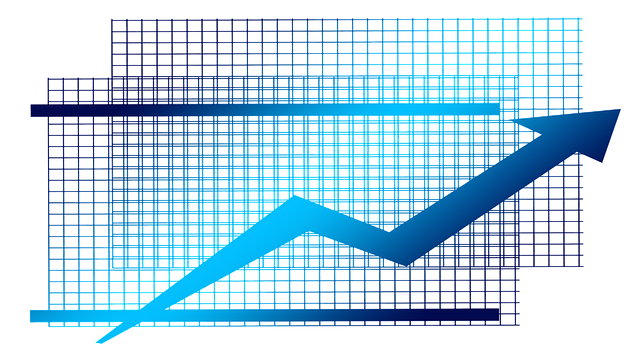Evaluating business loans involves a loan cost analysis that goes beyond interest rates, considering fees, terms (fixed vs. variable, amortization), and long-term impact. By comparing various types like bank loans, peer-to-peer lending, or credit lines, businesses can choose the most cost-effective option tailored to their financial capabilities and growth objectives. This in-depth assessment includes understanding repayment structures and associated fees, empowering informed decisions for sustainable business growth. Reputable lenders with strong customer service further enhance positive outcomes.
Evaluating loan options is a crucial step for any business expansion or startup. This comprehensive guide walks you through the key aspects of understanding and assessing various loan types, with a focus on loan cost analysis. From deciphering complex terms to navigating interest rates, we break down the essential factors that impact your business’s financial health. Learn how to make informed decisions by exploring both numerical and soft factors involved in the evaluation process.
- Understanding Loan Cost Analysis: Unraveling the Key Factors
- Types of Business Loans and Their Unique Features
- Assessing Repayment Terms: A Comprehensive Guide
- Exploring Interest Rates and How They Impact Your Business
- Beyond Numbers: Soft Factors in Loan Evaluation
Understanding Loan Cost Analysis: Unraveling the Key Factors

Evaluating business loan options requires a thorough understanding of loan cost analysis, which goes beyond simply looking at interest rates. This comprehensive assessment involves scrutinizing various factors that collectively determine the overall financial burden of borrowing. Key elements include the loan amount, repayment period, and terms, as these directly impact the total cost. For instance, a larger loan may offer lower individual interest payments but translates to higher overall expenditure over time.
Repayment structures play a pivotal role in loan cost analysis. Different loan types propose varied repayment schedules, with factors like fixed versus variable rates, amortization periods, and prepayment penalties influencing the financial trajectory. Businesses must also factor in potential fees associated with processing, early repayment, or late payments, which can significantly add to the overall loan cost. Understanding these components empowers business owners to make informed decisions, selecting the most favorable terms aligned with their financial capabilities and growth objectives.
Types of Business Loans and Their Unique Features

Business loans come in various types, each with its own unique features and benefits tailored to different business needs. One crucial aspect when evaluating loan options is a thorough loan cost analysis. This involves not only considering the interest rate but also factoring in fees, charges, and the overall financial impact over the life of the loan.
For instance, traditional bank loans often offer fixed interest rates and predictable monthly payments, making them suitable for businesses seeking long-term funding. On the other hand, alternative financing options like peer-to-peer lending or business credit lines may have variable rates but can provide faster access to capital. A comprehensive loan cost analysis helps entrepreneurs choose the most cost-effective option aligned with their financial goals and risk tolerance.
Assessing Repayment Terms: A Comprehensive Guide

When evaluating loan options for your business, understanding the repayment terms is crucial. Go beyond simply looking at interest rates and consider factors like loan duration, repayment schedule, and any associated fees. A thorough loan cost analysis involves breaking down each component to grasp the full financial commitment. Examine the terms closely to ensure they align with your cash flow capabilities and business goals.
Repayment structures can vary significantly among lenders, from fixed-rate schedules to variable terms. Evaluate each option meticulously, considering both the immediate financial burden and long-term implications. By thoroughly assessing repayment conditions, you’ll make an informed decision that supports the sustainable growth of your business.
Exploring Interest Rates and How They Impact Your Business

When evaluating loan options for your business, understanding interest rates and their impact is crucial. Interest rates are a key component in any loan cost analysis as they directly affect the overall financial burden of borrowing. Lower interest rates mean less money spent over time on the loan, which can significantly impact your business’s bottom line.
Exploring different interest rate scenarios allows you to gauge the potential savings or additional costs associated with various loan options. This analysis should consider both fixed and variable interest rates, as well as the length of the loan term. By understanding how these factors interact, you can make informed decisions that align with your business’s financial goals and risk tolerance.
Beyond Numbers: Soft Factors in Loan Evaluation

When evaluating loan options for your business, it’s crucial to look beyond the numbers and consider the broader context. While interest rates and repayment terms are essential factors in a loan cost analysis, they don’t tell the whole story. Soft factors—such as the lender’s reputation, customer service, and flexibility—can significantly impact your overall experience and financial health.
Reputable lenders with strong customer service records often provide better support throughout the loan process and beyond. They might offer more accommodating terms or additional resources to help businesses succeed. Moreover, considering the lender’s expertise in your industry can be invaluable, as they may understand unique business needs and challenges, leading to more tailored solutions and a stronger partnership.






